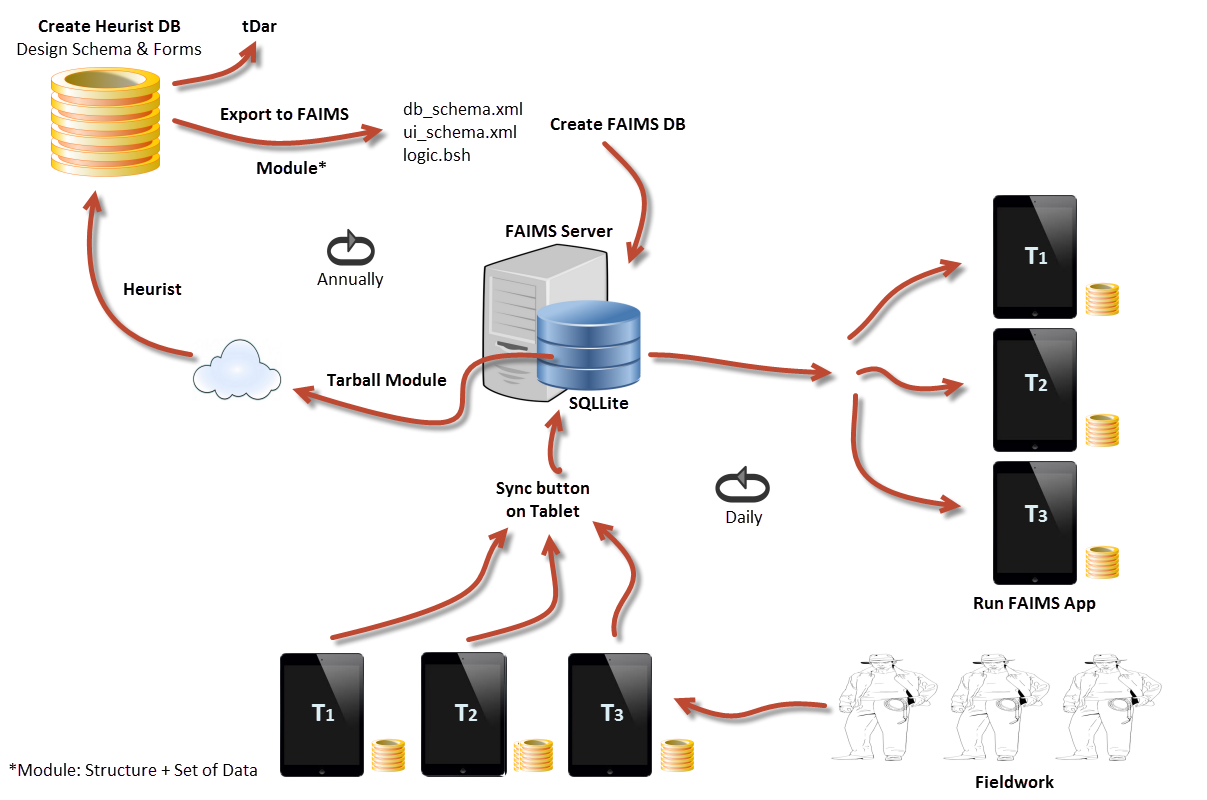[Superseded]
Heurist plays a central role in the FAIMS workflow.
Archaeological data recording systems, for survey or excavation, are first designed as a Heurist database.
Heurist then exports the XML and Beanshell files necessary to set up the FAIMS synchronisation server and Android tablet app for use in the field (these files may be used as-is, or further customised by manual editing).
The data collected across multiple tablets is synchronised automatically and can then be reimported into Heurist for further manipulation and analysis.
Finally, Heurist exports the data in various formats including directly inserting data in the tDAR repository (Open Context interface will be developed in 2014).
This process is illustrated in the following diagram:
Additional workflow details on how to build a FAIMS module from scratch are available . A presentation by Ian Johnson, entitled ‘Doing Data Structures Right: From Heurist Entities to FAIMS Forms and tDAR Deposit’ is avilable

